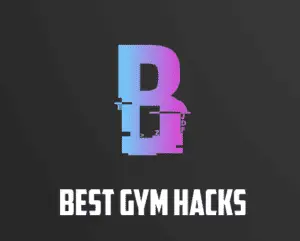The biggest misconception often heard is that “you cannot do CrossFit if you’re unfit” or “too out of shape“.
However, is this actually true? Let’s find out.
Because CrossFit is infinitely scalable and adaptable, it stands to reason that it’s suitable for anybody and everybody. It’s done by everyday folk who are overweight, underweight, or with physiological limitations; and by people of all ages – from age 3 to 93. There is no prerequisite fitness level, nor required weight level before you enter CrossFit gym. Therefore, given the versatility and adaptability, Crossfit is suitable for anyone who is looking to exercise at a level, speed, intensity, weight or frequency that suits them.
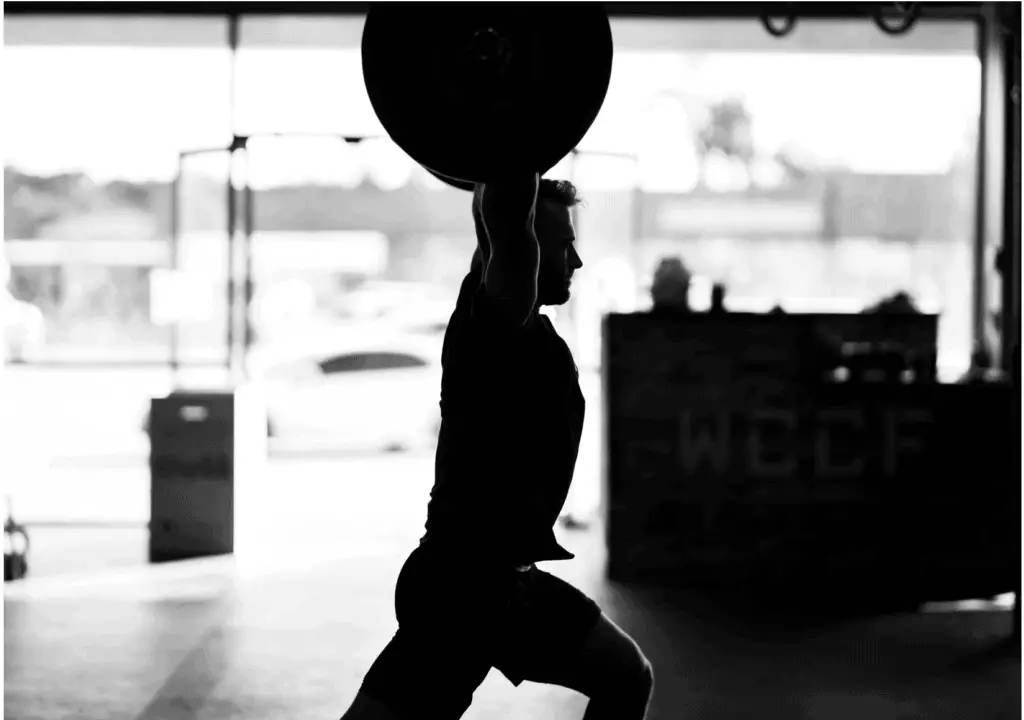
How can this be so? Isn’t it full of shredded 3-headed young-gunned beasts lifting hundreds of kilograms?
Age is a irrelevant
You may have heard this challenge about being too old from some people who might be intrigued by CrossFit, yet they lay claim to being too aged to try it.
This misconception is entirely incorrect, but understandable in some ways.
Perhaps they’ve seen the Netflix doco ‘Fittest on Earth‘ which is only probably 0.1% of who CrossFitters are (i.e. the professional elite athletes).
Normal membership averages are somewhere between aged 25 and 53.
That said, there are many members aged 3 to 19 and from 50 to 90+ doing CrossFit the world over.
It’s a semi-PT class, affording specific focus on those members who have less fitness experience, meaning they get the attention they deserve.
Best Gym Hacks
The two affiliates which I co-own have members from age 3 to 75.
Our overall membership size is small to medium.
In large to very large CrossFit gyms, these quantities of lower and higher-aged members would be more pronounced, especially where specialist classes are on offer.
Specialist Classes
Many CrossFit gyms even have seniors classes, kids classes, pregnant women and postpartum classes, the like of which serve those of broad age ranges; or members in specific situations within their lives.
Therefore the debunk-able myth that you need to be young to do CrossFit is not founded on reality.
In fact, it can be fully tailored to suit members of any age, even in standard (non-specialist) classes.
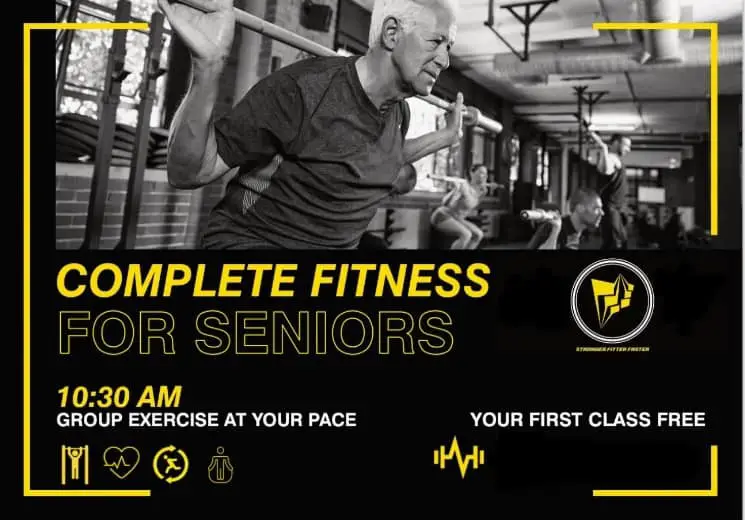
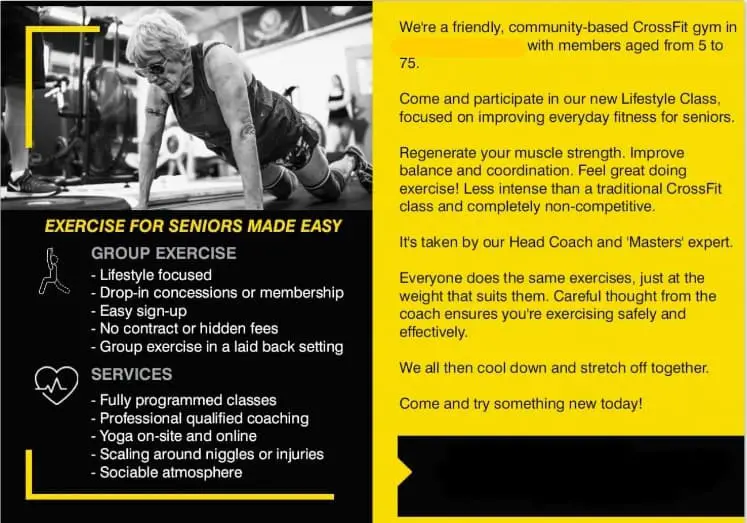
No prior fitness is required
The 2nd pre-conception which is incorrect is that you need prior fitness – or previous exercise experience – before starting.
This again is completely untrue. On the contrary, if you’ve had no fitness experience whatsoever CrossFit is the perfect place for you.
CrossFit is a good place to start your fitness journey
The reason for this: the coach can pay particular attention to those who need additional coaching, pointers and supervision.
It’s a semi-PT class, affording specific focus on those members who have less fitness experience, meaning they get the attention they deserve.
CrossFit compared to globo
Contrast that with someone with no fitness experience going to a ‘globo gym’ (Virgin Active, Anytime Fitness, PureGym etc).
This Best Gym Hacks article analyses the difference between CrossFit gyms and normal gyms.
No PT or coach
In that environment without a PT, they would have no direction, no programming which can be explained and implemented by a professional every day, and overall not any external encouragement which would help them acknowledge progress.
To that end, a person with no fitness experience is the perfect candidate for joining a CrossFit gym.
In that place, they would learn far quicker, likely enjoy exercising a lot more, and will be doing things in a safer, more effective, manner.
Diet + exercise = results
CrossFit classes are hugely educational. Many offer dieting programs too, along with tonnes of other bells and whistles such as physio, massage and PTing (personal training), should that be required.
Should I get in shape before starting CrossFit?
A 3rd misconception is that often people want to get in shape before starting Crossfit.
Again, this is easily debunked because CrossFit is the perfect environment for someone to get into shape.
Therefore it is unnecessary that someone might go elsewhere to “get in shape” when one of the very objectives of CrossFit is to get someone into shape.
It could be they’ve received the misconception from watching something on Netflix.
However, oftentimes they may feel instantly at ease when seeing the huge variety of human shapes, sizes, ages, and abilities found in many CrossFit gyms.
All three elements mixed or used in isolation, create a versatile set of options for everyone – whether out of shape, obese, unfit, injured or disabled.
Affiliate flavours
Of the 70+ CrossFit affiliates I have been lucky enough to visit around the world, all of them share the same chasm of demographics – i.e. it is extremely broad in age, shape, size, and ability.
This is really humbling.
Not to mention thoroughly fulfilling for coaches, who are there to help people – whatever their circumstances – on their journey, to becoming fitter and better their shape, whatever that looks like.
Infinitely Scalable, Adaptable & Substitutable
The flexibility within the catalogue of exercises allows for infinite scaling.
This is just a fancy way of saying if an exercise is too difficult or too heavy, it can easily be adjusted to suit the needs of the person questioning the movement.
Adaptation is also a huge element.
There are whole divisions at the CrossFit Games that allow for ‘Adaptive Athletes‘.
So those with physical limitations – such as missing limbs, reduced vision, or other physiological and neurological issues – can still compete within subcategories, namely the Adaptive Division.
This Best Gym Hacks article expands on this topic – check it out.
Interchanging movements
Furthermore, if a movement really is not to someone’s taste or maybe it aggravates an injury, then any movement can be substituted for something completely different.
Ideally, it would be something that would take a similar amount of time, which would inevitably provide the correct stimulus for the workout.
An example may be, instead of Deadlifting due to back-pain, someone might sub in Wall Balls.
Or if knee pain is an issue, instead of Squat Cleans, someone may carry out Power Cleans, and at a lighter weight.
All three elements mixed or used in isolation, create a versatile set of options for everyone – whether out of shape, obese, unfit, injured or disabled.
How long does it take to get in shape doing Crossfit?
In a nutshell, it is most beneficial probably to do at least three classes per week on average, if possible.
For an in-depth answer to this question, check this Best Gym Hacks article out here.
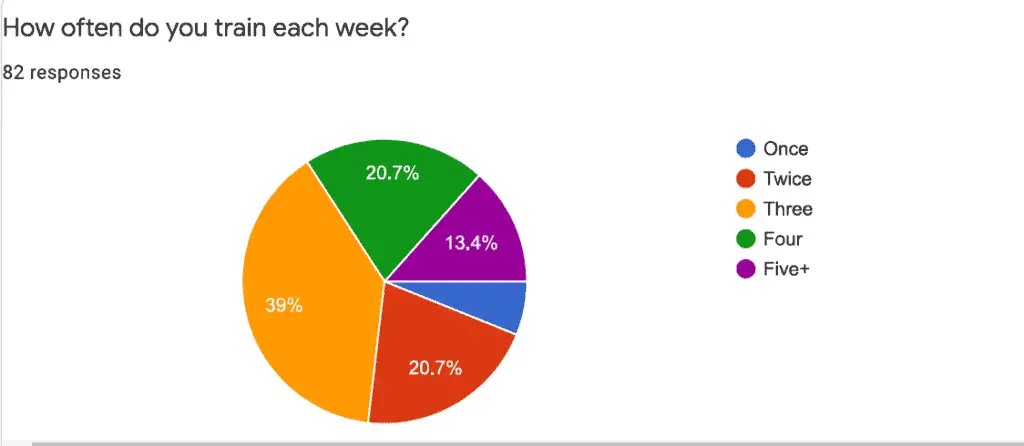
1 per week
Doing one per week is not particularly productive unless it’s being used alongside something else; or if CrossFit is being used to supplement, say running.
2 per week
If doing two per week and nothing else you may notice slight improvements, but because there’s so much to learn it may take a lot longer to notice significant results.
Also, if you miss a day because life gets in the way, your monthly/yearly average will more along the lines of 1.6-1.9 classes per week.
3 per week
Three per week is the most common in our two affiliates, as the pie chart shows.
It’s a popular number because it enables one to carry out the programming productively – based on a six-week block – over the week.
It also helps set in muscle memory, as by going enough times per week, the myriad of techniques are practised in an efficient manner.
4 per week
Four times per week is also good, but should be spread ideally over the 7 days, with sufficient rest days sandwiched in between.
Careful programming from coaches should ensure that huge volumes of certain movements are not put into the programming on consecutive days.
Therefore, you are able to train on consecutive days without the worry of overtraining a certain movement, or muscle group.
5 per week
Five times per week is also another common number of classes.
However, care should be taken if training this amount, ensuring that your diet is correct, you are stretching enough, your rest is sufficient and it’s appropriately spaced, and that you are generally not overtraining.
6 per week
Six days per week is quite a lot. Many people do six days or even seven days.
This is not particularly advisable for any exercise or sport generally speaking, unless operating at a professional capacity or elite level.
Find a balance
Overall, balance should be struck.
We should supplement CrossFit with other exercises, whether that be active rest days such as hiking, swimming, riding bikes or football your kids in the park etc.
Everything good should be done in moderation. You need to listen to your body, ensuring that you’re not overtraining.
Equally, you should be training enough that you’re getting the most out of your membership and will notice the benefits quicker with sufficient class attendance.

Going for a hike on an active rest day
Can you do cross fit and not get bulky?
Just because someone does Crossfit does not automatically mean they become bulky.
In fact the huge portion of people who do cross CrossFit do not become bigger or bulky.
Unless your intent is to increase muscle mass, you will not just become bigger from doing CrossFit. (Sorry to burst your bubble if you thought otherwise!).
There is an inherent reliance upon the diet and sheer quantity of calories you on-board if you’re trying to grow in size.
In order to read about the process of creating muscle mass using CrossFit, see these articles here.
Supplementing
Furthermore, there are supplements out there which help CrossFitters to put on muscle mass, should that be the goal.
These include things such as creatine which enables lifting of more weight. It also has an effect on water retention, which as a consequence has an outward exterior influence on size.
This is not steroid abuse. Creatine is a legal and widely used to supplement in many training regimes, not just Crossfit, but many sports.
Activity central
You will lift weights, row on machines, swing on pull-up bars and run down roads when doing CrossFit.
If your desire was to become bulky, an emphasis on weight training such as Squats, Cleans, Jerks, Deadlifts, Benchpress etc, could be utilised to get you there.
So, in summary for the everyday CrossFitter, it is entirely possible – and more common than not – to do CrossFit and not become bulky.
CrossFit for ‘plus size’
As noted above, there is huge scope for reducing weights, adapting or substituting the exercises. So this extends naturally to CrossFit for ‘plus size’.
It might be a safe observation to say that someone who is plus size has not done exercise for a long time.
So for them, the journey may be more difficult to lose weight, become motivated or stay motivated.

With a coach always on hand, coupled with huge scope to revise what’s on the board, this means that CrossFit for ‘plus size’ is fully obtainable, and actively encouraged.
You will find that many members in CrossFit gyms will be really encouraging. They’ll help you along your way more than you might believe.
Generally speaking, all CrossFit gyms are outwardly positive places.
Fellow members to love seeing others who are less advanced on their journey doing well.
Even more so is coach is seeing results in their members who are attending. Job satisfaction 101.
If you consider yourself plus size and are exploring the idea of CrossFit, put the worries to one side and go to your local Crossfit gym. You won’t feel like you shouldn’t be there.
On the contrary, you’ll be welcomed by members and coaches.
Should an obese person do CrossFit?
An obese person can indeed do CrossFit. But as we saw, it should be adapted to suit them.
Even for those with underlying health conditions, this does not preclude someone from doing CrossFit.
Great care should just be taken to understand you are working out safely.
You should always make known any health issues such as heart problems or respiratory issues for instance, on the waiver.
Also, notify your coach so this can be factored into your class planning.
Stepping into the gym is the hardest part. It gets easier each time you go.
A bigger person doing CrossFit
As a bigger person, you already have an advantage with regards to an underlying strength.
You may well find yourself quickly out-lifting yourself (and your newfound friends) because your baseline strength is already greater than theirs.
Most importantly, have fun.
